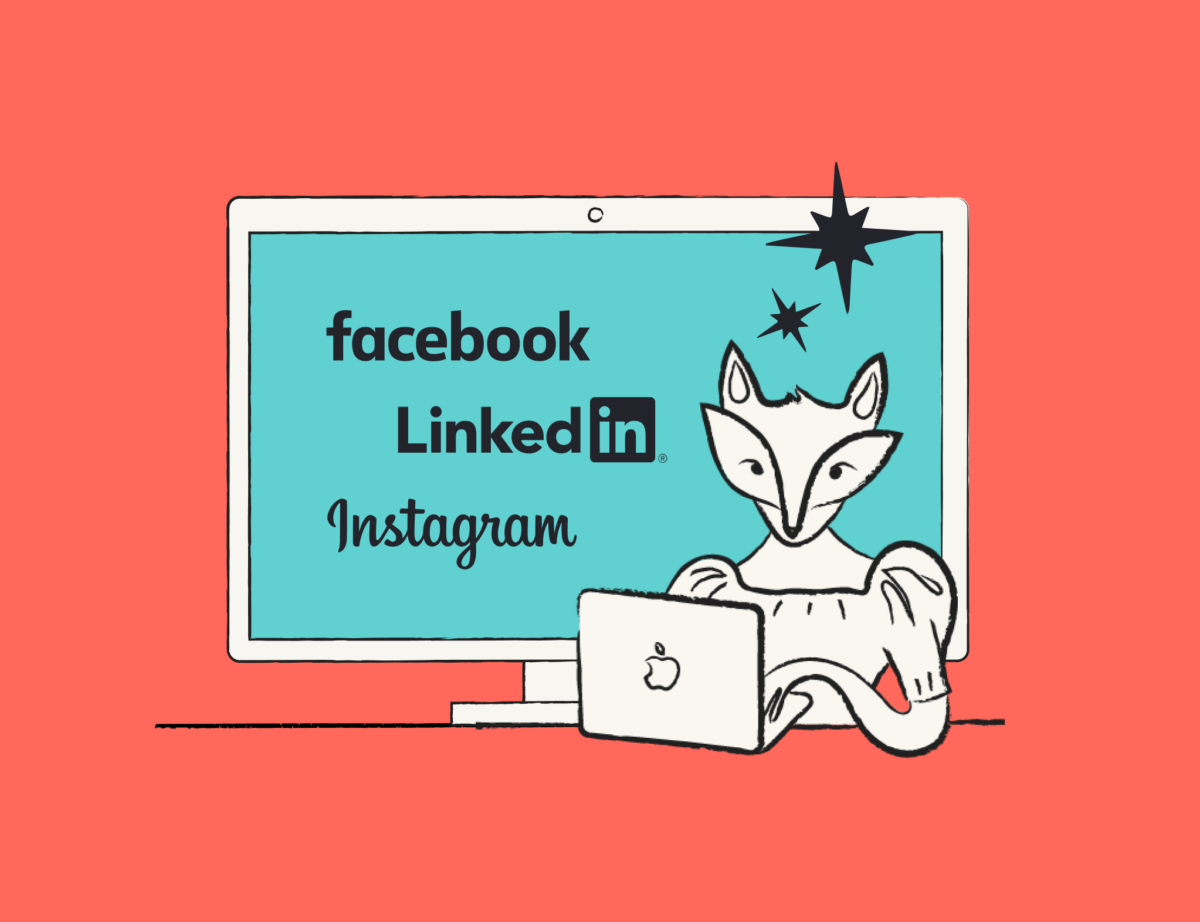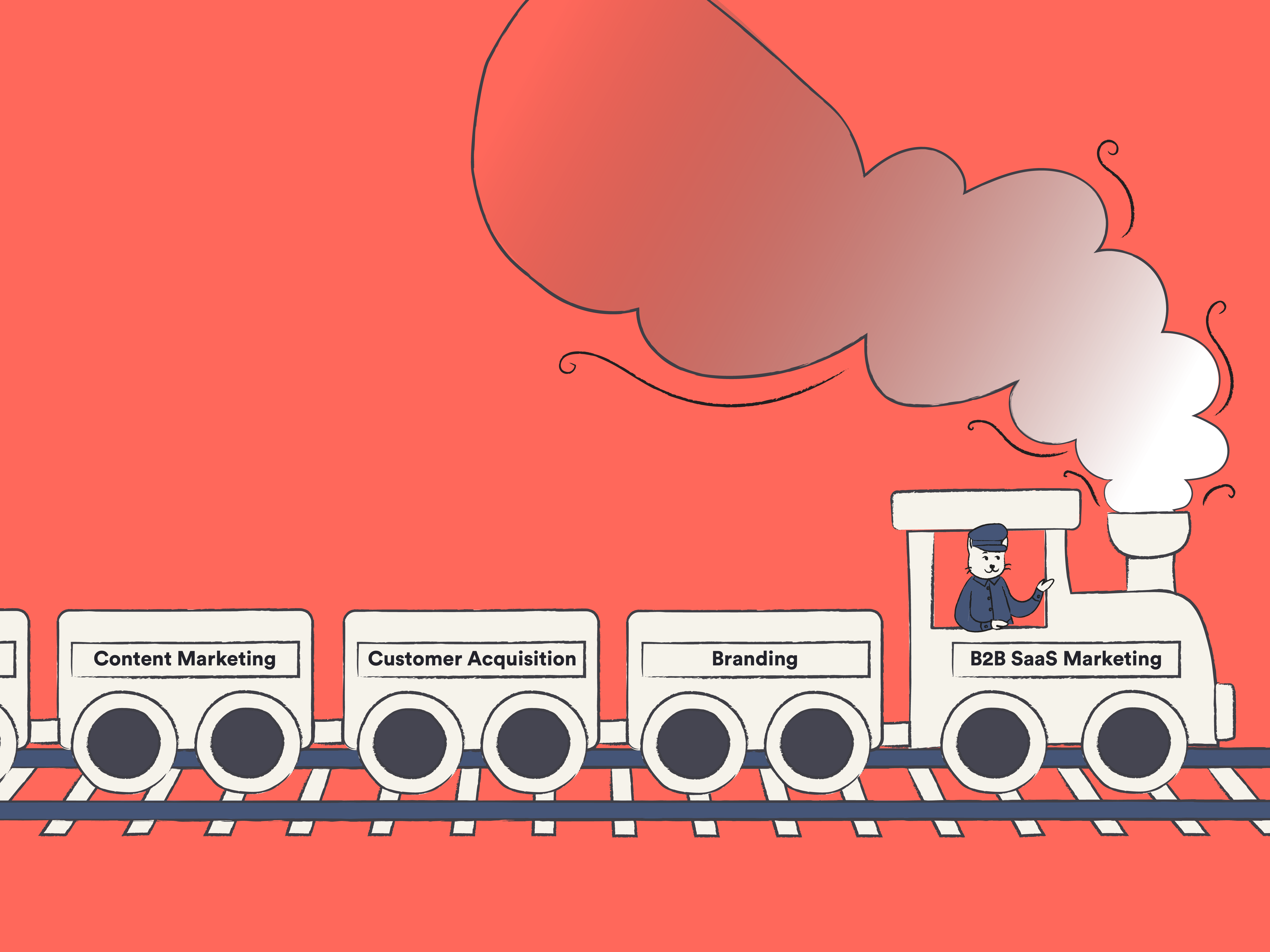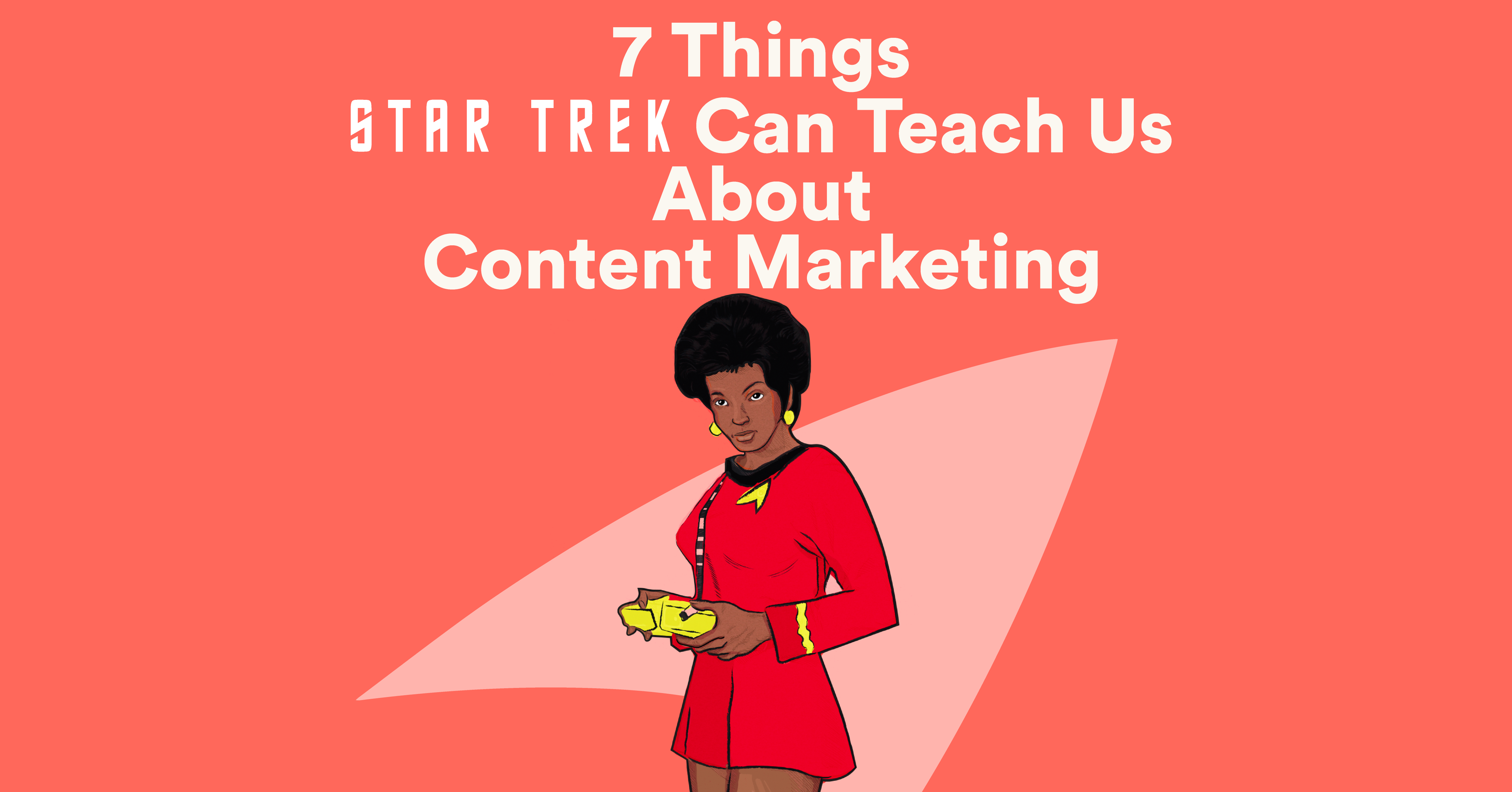Imagine crafting a masterpiece, only to have it hidden away in an obscure corner of the internet — that’s what happens when you neglect content distribution.
Unfortunately, it’s not a case of “if you build it, they will come.” It’s more like, “If you build it, then share it through a targeted distribution strategy, they will come.”
In the digital era, creating stellar content is only half the battle — the other half is getting the right eyeballs on it.
Distribution channels are a crucial cog in the digital marketing machine — so how do you build a strategy that not only disseminates content but also resonates with your audience? And which channels are most effective for your content?
Stay tuned for the answers to these questions and more as we dive into content distribution — including platforms, best practices, and tips for overcoming common challenges.
Why do you need content distribution channels?
According to Jonathan Perelman, founder and co-managing partner of albinen, “Content is king, but distribution is queen. And she wears the pants.”
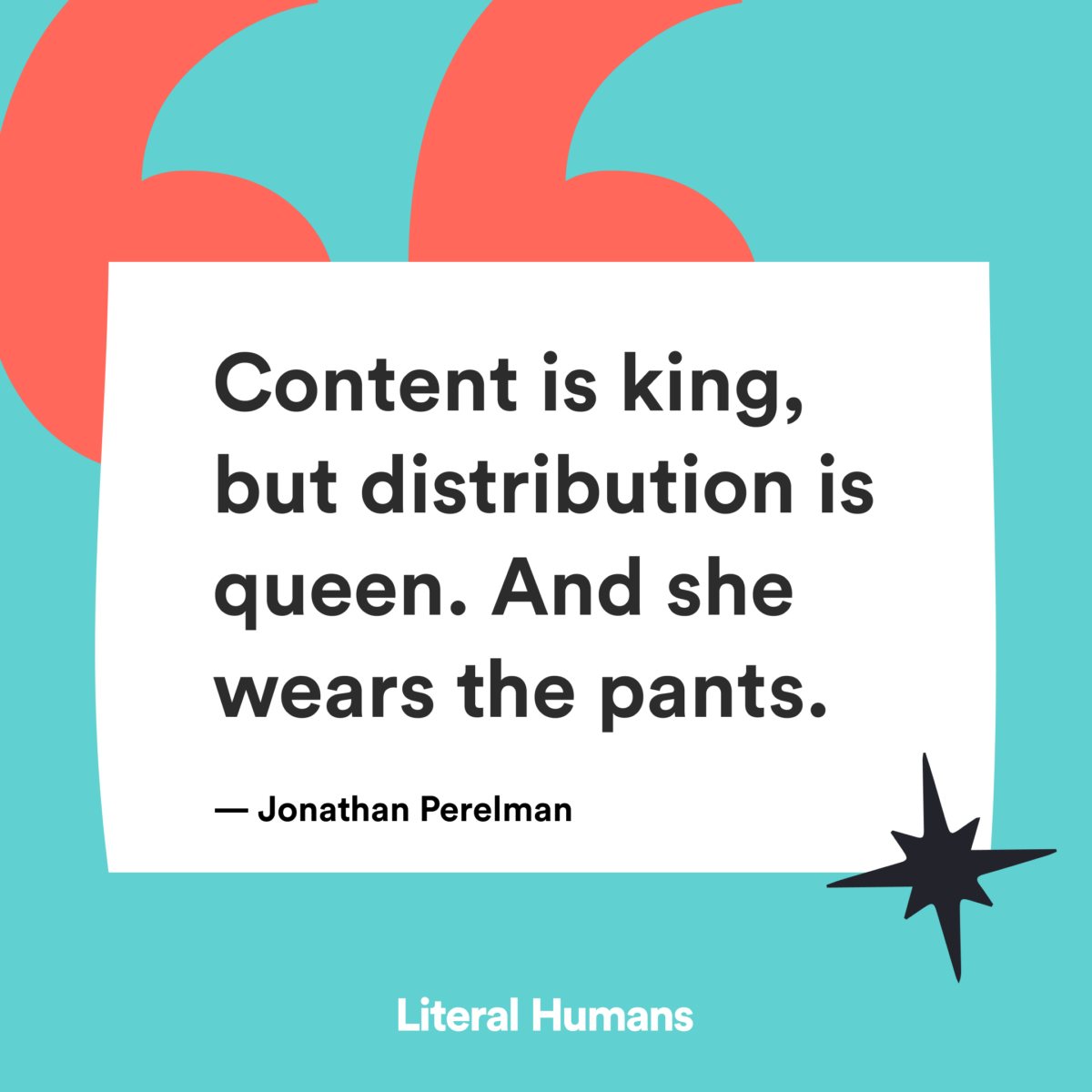
Here’s why: just as a tree falling in an empty forest makes no sound, content without distribution fails to make an impact. It’s all about placing your message in front of the right eyes, at the right time, in the right context.
Without distribution, your carefully crafted words and ideas risk fading into the vastness of the internet, unheard and unseen — so distribution makes the difference between ‘great content’ and ‘great content that actually gets seen.’
What are content distribution platforms?
Content distribution platforms are dynamic ecosystems that amplify your content’s voice in the crowded digital marketplace.
Another way to think of distribution channels is as the highways that connect your content with its audience. Whether it’s the bustling streets of social media platforms like Facebook or LinkedIn, the targeted pathways of email marketing platforms, or the visual arenas of YouTube and other video-sharing sites, each platform offers a unique route to your audience’s attention.
From the subtle art of content syndication networks to the burgeoning world of influencer and podcast platforms, these channels provide diverse opportunities to present your content.
Why choosing the right content distribution platform matters
Mismatched content and platforms are like a square peg in a round hole — ineffective and potentially damaging to your brand’s reputation. On the other hand, a well-chosen platform ensures that your content doesn’t land just anywhere but where your audience is most receptive to it.
Imagine the impact of a powerful business article lost in the whimsical world of TikTok or a trendy fashion vlog going unnoticed in the professional corridors of LinkedIn.
By contrast, the right channel amplifies your content’s voice, ensuring it is heard, appreciated, and acted upon by the audience it was crafted for.
The top 7 content distribution platforms
1. Social media
Social media has been the biggest disrupter of content distribution in recent years, shifting the focus away from traditional media outlets and onto social platforms in just over a decade.
This is largely due to the unparalleled reach of social media, with billions of users around the world, compared to the (relatively) limited reach of traditional media.
It also enables brands to engage with users in real-time, helping them build a loyal following and gather valuable insights about what their audiences want.
But how do you decide which platform to distribute your content on? It all depends on who your audience is, what you’re trying to sell them, and the type of content you produce.
Let’s take a look at some of the most popular platforms and their use cases:
Facebook: Although this social media grandaddy has fallen out of favor among Millennials and Gen Z, its community-driven nature and vast and diverse user base still make it a good platform for content distribution.
Visual content, live videos, news stories, and interactive content like polls still work well in Zuck-world.
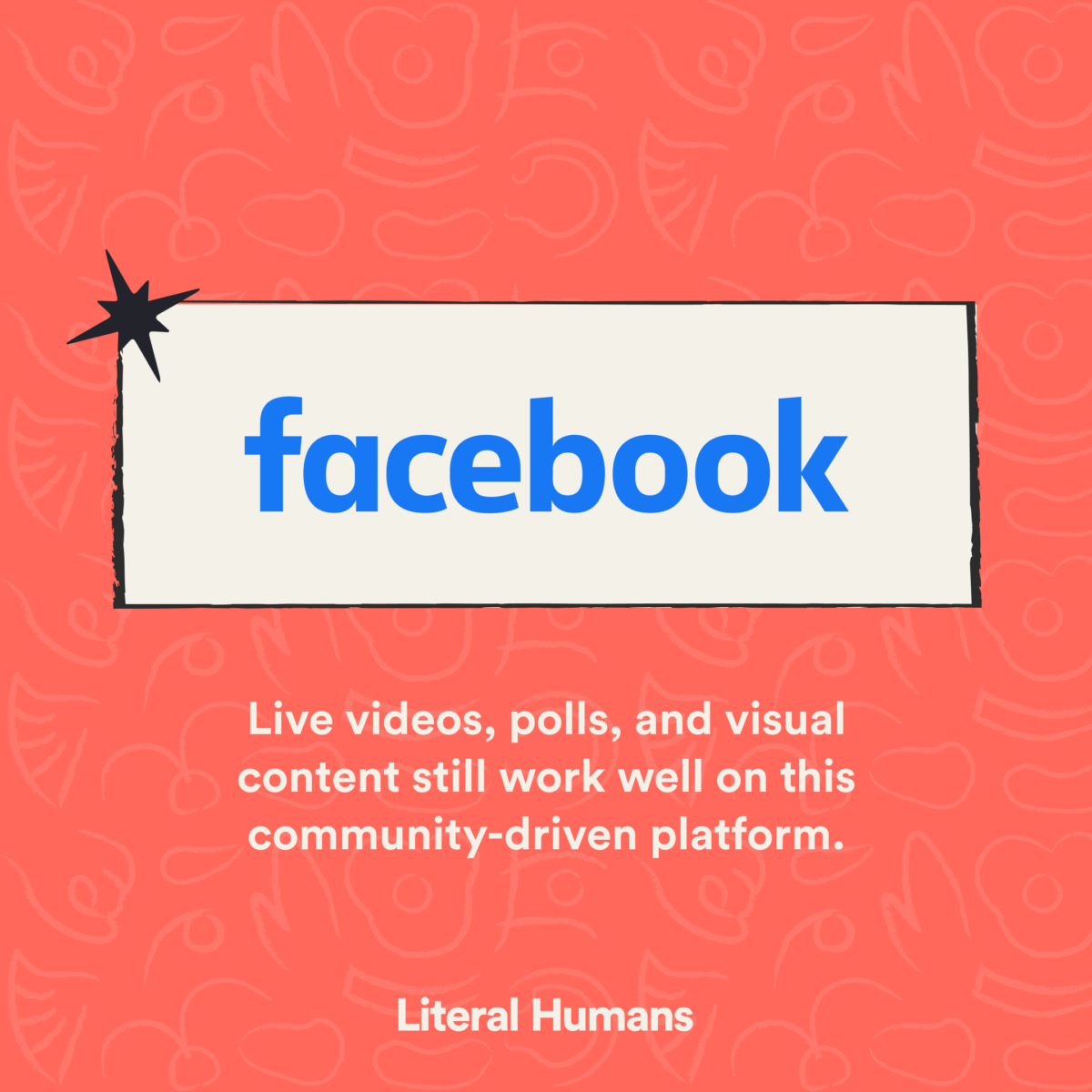
LinkedIn: With its focus on professional networks and businesses, LinkedIn is great for business leaders, freelancers, and any person or company that wants to position themselves as a leader in their industry.
Educational and thought leadership content like webinars work well on this platform, as do B2B marketing materials like white papers and ebooks, and career-related news or company updates.

X: With its fast-paced and concise format, the platform formerly known as Twitter is ideal for short, snappy posts, breaking news and real-time updates, bite-sized thought leadership, and interactive and visual content.
The informal atmosphere on X makes it a great place to build relationships and showcase your brand personality, but as users leave the platform faster than rats jumping off a sinking ship, it remains to be seen what the future holds for the former ‘bird app.’

YouTube: Unsurprisingly, this video platform is great for distributing video content.
As the world’s second most-used search engine, YouTube offers a myriad of opportunities for content distribution.
These include educational and how-to videos, product reviews and demonstrations, vlogs and personal stories, webinars, and documentaries.

TikTok: The ‘clock app’ is best for reaching younger audiences with quick, catchy, and often humorous videos designed to entertain audiences and, if you’re lucky, go viral.
While a dance challenge may not be suited to every brand, the short video format provides opportunities to create bite-sized educational videos, as well as lifestyle, behind-the-scenes, and user-generated content.

Instagram: With an emphasis on visually rich and aesthetically pleasing content, Instagram is a great place to connect with your target audience.
High-quality images, short videos, Reels, live streaming, visual narrative, and carousel posts all work well on this platform.

2. Content syndication networks
Content syndication networks are platforms or services that allow the distribution of content across different websites and channels to reach a broader audience.
This process involves republishing the same content on multiple sites. For example:
BuzzFeed: Known for content creation, curation, and syndication, BuzzFeed partners with various publishers and websites to syndicate their content, encompassing news, entertainment, lifestyle, and more, thereby reaching a larger audience.
Medium: As an online publishing platform, Medium enables individuals and organizations to share their content with a wider audience. It provides a space for writers, bloggers, and thought leaders to publish articles and reach readers beyond their websites, offering syndication opportunities through its curated publications and distribution channels.
LinkedIn Pulse: This platform is tailored for professionals and businesses, allowing users to publish and share long-form articles, blog posts, and industry insights. Content syndicated through LinkedIn Pulse can reach a broad audience of professionals within specific industries or fields, fostering thought leadership and networking opportunities.
3. Email marketing platforms
Email marketing platforms are invaluable tools for distributing content directly to your audience’s inbox, providing a personal and targeted approach. These platforms allow you to segment your audience, personalize messages, and track engagement metrics, making your content distribution more effective.
Some of the most popular platforms include:
- Mailchimp: Known for its user-friendly interface and robust analytics.
- Constant Contact: Offers extensive automation and integration options.
- Sendinblue: Combines email marketing with SMS campaigns.
- HubSpot: Integrates email marketing with a comprehensive suite of marketing tools.
4. Video-sharing platforms
Video content distribution platforms offer a range of avenues to share and promote video content, each catering to different audience needs and content types. They include:
Third-party aggregators: These platforms, like Prime Video Channels, provide an opportunity for content creators to reach a broader audience without worrying about the intricacies of publishing and monitoring content. This approach can be particularly beneficial for new creators seeking to build credibility and trust.
Virtual multichannel video programming distributors (vMVPDs): Services such as YouTube TV, Sling TV, fubo, and Hulu + Live TV fall under this category. They are ideal for reaching audiences who prefer the familiarity of traditional TV but desire it through internet streaming.
These platforms are growing in popularity, especially among users cutting the cord from traditional cable services, and also support ad breaks for additional revenue generation.
Choosing the right platform depends on the content type and target audience. For example, vMVPDs may be more suitable for attracting traditional TV viewers, while owning and operating a streaming app might be better for building a dedicated video business.
A strategic approach often involves combining different platforms, such as using both a branded OTT app and third-party aggregators, to maximize reach and engagement.
5. Influencer marketing
Influencer marketing leverages the credibility and reach of individuals who have established a substantial following on social media or other digital platforms.
This strategy is particularly effective because it harnesses the authenticity and trust that influencers have built with their audience. When an influencer endorses a product or service, it is often perceived as a personal recommendation rather than a corporate advertisement.
This perceived authenticity can lead to higher engagement rates, as followers are more inclined to interact with content shared by someone they know and trust.
Additionally, influencer marketing campaigns offer measurable results, allowing businesses to track sales, website traffic, and social media engagement directly resulting from the campaign.
6. Podcast distribution platforms
Podcast distribution platforms play a pivotal role in the world of digital content. Once a podcast is recorded and edited, these platforms act as the launchpad, propelling the content into the digital universe where it can be discovered and enjoyed by listeners everywhere.
Among the popular choices for podcast hosting and distribution are Anchor, Buzzsprout, and SoundCloud. These platforms not only facilitate the publication of podcasts but also enable distribution across various channels, ensuring that the content reaches listeners worldwide.
They cater to the growing popularity of podcasts by providing accessible, user-friendly services that make it easier for creators to share their audio content and for audiences to discover and engage with it.
7. Content aggregator platforms
Content aggregator platforms streamline the process of content distribution by gathering and presenting content from multiple sources in a single location. This aggregation allows for a comprehensive and diverse range of content to be made accessible to users in one centralized feed.
A typical example is a news aggregator app, which collects headlines and articles from various sources, organizing them into one unified stream for readers. This approach enhances the visibility and reach of the content and simplifies access for the audience, who can find a variety of content, such as news stories, in one convenient location.
4 common content distribution challenges (and how to solve them)
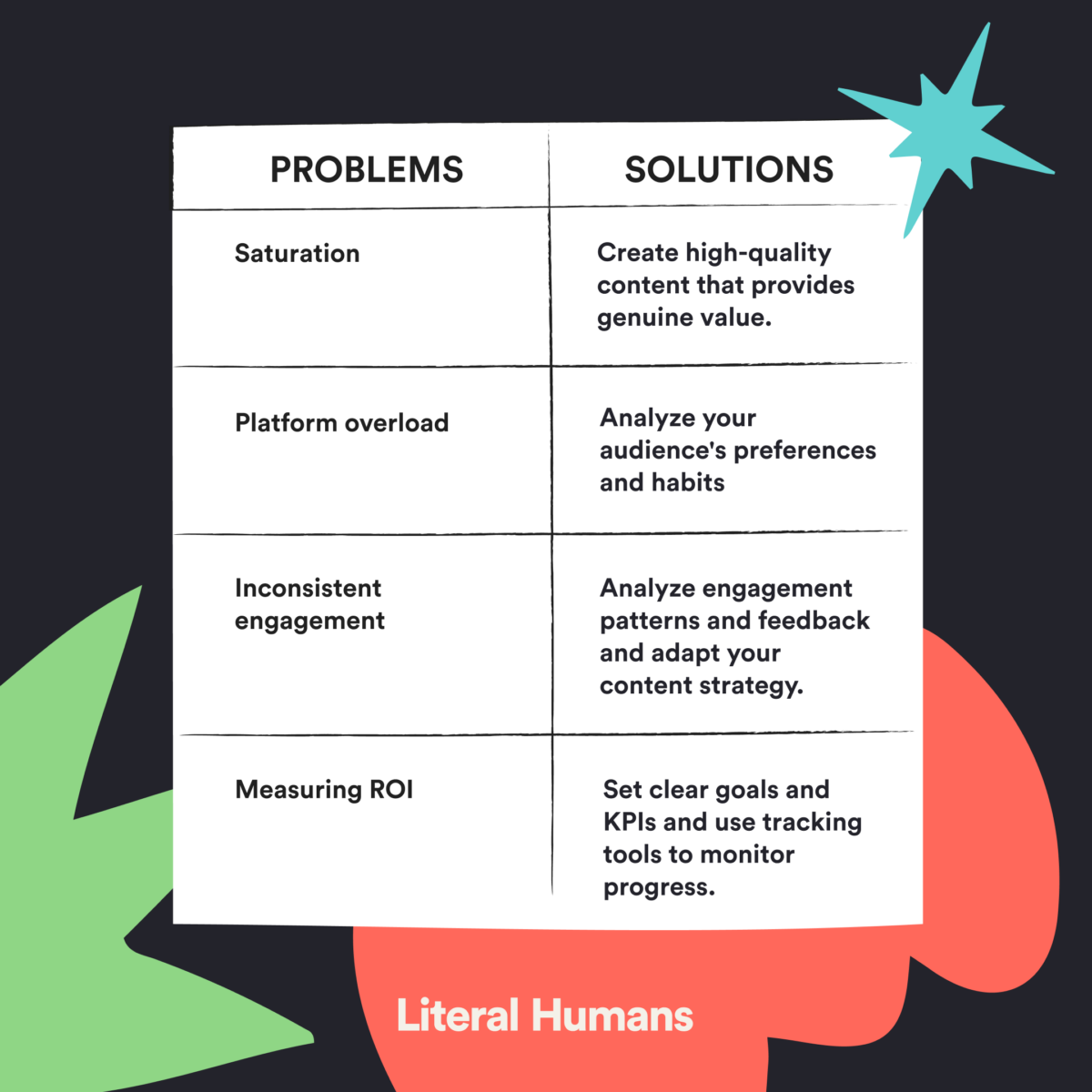
- Saturation: The digital world is awash with content, making it tough to stand out.
Solution: Focus on creating unique, high-quality content that provides genuine value to your audience. Leverage SEO strategies and target specific niches to cut through the noise.
- Platform overload: With myriad platforms available, choosing the right one can be overwhelming.
Solution: Take time to understand your audience’s preferences and habits. Test different platforms and use analytics to determine where your content performs best.
- Inconsistent engagement: Engagement can fluctuate, making it difficult to maintain a steady audience.
Solution: Regularly analyze engagement patterns and feedback and adapt your content strategy to align with what resonates most with your audience.
- Measuring ROI: Determining the return on investment for content distribution can be challenging.
Solution: Set clear goals and KPIs and use tracking tools to monitor traffic, engagement, and conversions directly attributable to your content distribution efforts.
Tips for effective cross-platform distribution
Effective cross-platform distribution requires a harmonized approach, blending consistency with platform-specific nuances. Here are key tips to master this balance:
1. Understand each platform
Each channel has its own language and audience. Tailor your content to fit the unique style and preference of each platform while maintaining your brand’s voice.
2. Leverage content variations
Adapt the core message for different formats. A long-form blog post can be a video on YouTube, a series of tweets on Twitter, and an infographic on Instagram.
3. Synchronize your timing
Align your posting schedule across platforms to maximize reach. However, consider the best times to post on each platform for optimal engagement.
4. Track and analyze performance
Use analytics to understand how your content performs on each platform. This insight will guide future content creation and distribution strategies.
5. Engage with your audience
Interact with your audience across all platforms. Engagement increases visibility and helps in understanding audience preferences.
6. Cross-promote content
Use each platform to promote content on other platforms, creating a web of interconnected content.
How to build an effective content distribution strategy
Creating an effective content distribution strategy involves several crucial steps, each contributing to the overall success of your content marketing efforts:
1. Research your target audience
Understand who your audience is, their preferences, and what they enjoy reading or watching. Gather demographic data such as age, gender, income, and location from sources like your website analytics and social media insights to build a detailed profile of your audience.
2. Audit your existing content
Review your current content to assess its effectiveness. This process helps in identifying the types of content that have performed well and areas where you can expand or improve.
3. Choose your content distribution channels
Select the platforms where your content will be distributed. This choice should be based on your audience research and where your target audience is most active and engaged. Whether it’s social media, forums, or traditional PR channels, ensure that these platforms align with your audience’s behavior and preferences.
4. Set content distribution KPIs and goals
Define clear goals and key performance indicators (KPIs) to measure the success of your content distribution. This could include metrics like website traffic, engagement rates, lead generation, or sales conversions.
5. Build an editorial calendar
Plan your content creation and distribution schedule. An editorial calendar helps in organizing content across different platforms and maintaining a consistent posting schedule.
6. Create and distribute your content
Develop content tailored to each platform and distribute it according to your plan, ensuring it reaches your target audience effectively.
7. Measure and analyze results
Continuously monitor the performance of your content across different channels. Analyze the results against your KPIs to understand what works and what doesn’t, and adjust your strategy accordingly.
Make content distribution platforms work for you
As we end our expedition through the world of content distribution, it’s clear that getting your content seen is as much of an art as creating it.
Learning the myriad channels, understanding audience preferences, and aligning your strategy with measurable goals are just some of the keystones of success.
But you don’t have to go it alone! Partnering with digital marketing specialists like Literal Humans can transform your out-of-tune content distribution into an orchestrated symphony of engagement and reach.
Don’t let your content be a hidden gem in the vast digital expanse. Book a strategy session with us today, and let’s elevate your content from the shadows to the spotlight, where it truly belongs.

